With the Bumblebee II, Neat primarily wants to attract newcomers to the field of podcasts or video streams. As is usual for the company, any unnecessary ballast is dispensed with and only the essentials are concentrated on. If only all manufacturers would follow this premise.
Table of contents
- 1 Neat Bumblebee II: overview and price
- Design and processing
- Operation: Two buttons and LED ring
- Technology: solid without pop smudges
- Sound quality: convincingly balanced
- Sample recordings: Neat Bumblebee II
- Sample recordings of the competitors
- Conclusion
Neat Bumblebee II: Overview and Price
With the second generation of the Bumblebee, the microphone specialist Neat presented its third release after the King Bee II and the Worker Bee II (test) after the takeover by Turtle Beach in early 2021. While the two mentioned are XLR microphones, the should already meet professional demands in the music sector, the Bumblebee II as a USB sound recorder is aimed more at podcasters or streamers, but should also be suitable for video dubbing. The price of 100 euros RRP fits in with this.
Design and processing
From a purely visual point of view, the microphone is less reminiscent of a bumblebee and more of Humpty Dumpty, the egg from “Alice in Wonderland”. The processing is impressive for the RRP: while other manufacturers in this price segment invest a significant part of the development and production costs in the mostly unnecessary LED lighting, Neat concentrates on the essentials with the Bumblebee II – and that is a good decision . This is already evident in the choice of material: With the competition, plastic is often the predominant material at the targeted price, but with the present test candidate, Neat relies on metal except for the lower part of the base and the button for the operation. This not only gives the microphone a more valuable appearance, but is also generally more stable.
 Neat Bumblebee II in test
Neat Bumblebee II in testThis also means that the little bumblebee is rather plain and is simple and therefore functional. This circumstance should be seen as an advantage, because the microphone stays discreetly in the background when used in videos and does not distract from the actual thing.
Which microphone do you use on your PC or notebook?
- A microphone on the headset
- A standalone microphone
- A built-in device
- I don't use a microphone
- Abstain (Show result)
Please log in to vote!
The Bumblebee II is primarily designed as a table microphone, but can also be mounted on a microphone arm. For this, the manufacturer has included the obligatory adapter from 5/8'' to 3/8'' attached. Due to its low weight of 400 g and its construction, it can also be used hanging upside down. Standing on the table, the microphone can be tilted in its holder and thus positioned in the direction of speech, but in most cases it is a little too far away from the sound source.
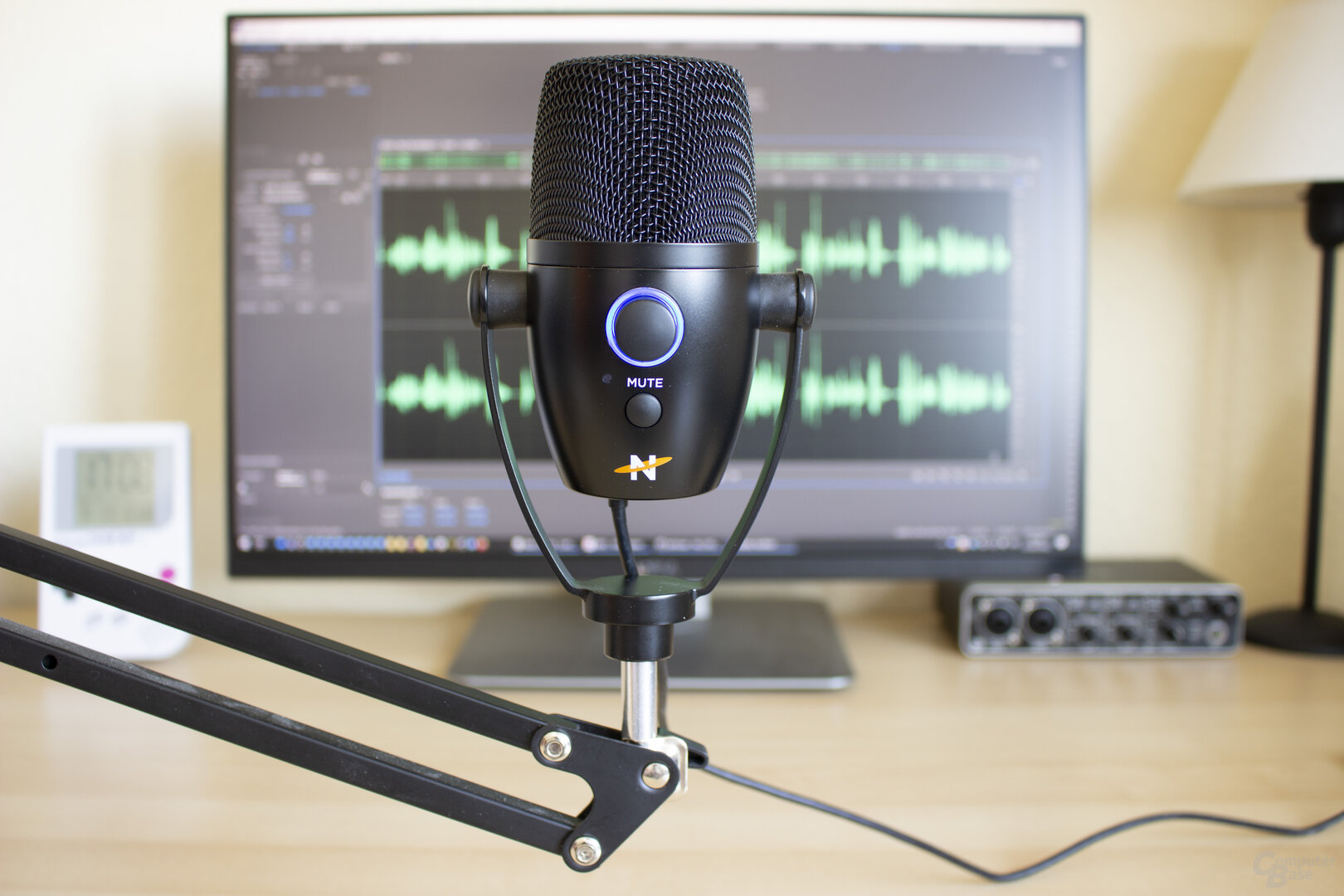 The Bumblebee II can also be used on a microphone arm
The Bumblebee II can also be used on a microphone armIn addition to the USB-C connector at the bottom, with which the Bumblebee II can be operated directly on a computer and without additional hardware, the microphone also has a 3.5 mm headphone connection, with which latency-free monitoring is possible. The position of the connections is less optimal: Since there is only a small distance between the bottom of the Bumblebee and the base, the cables can be kinked quickly and cable breaks can occur as a result. Due to the respective pressure, the interfaces should also be just as susceptible to loose contacts. Both would therefore have been better off on the back of the microphone.
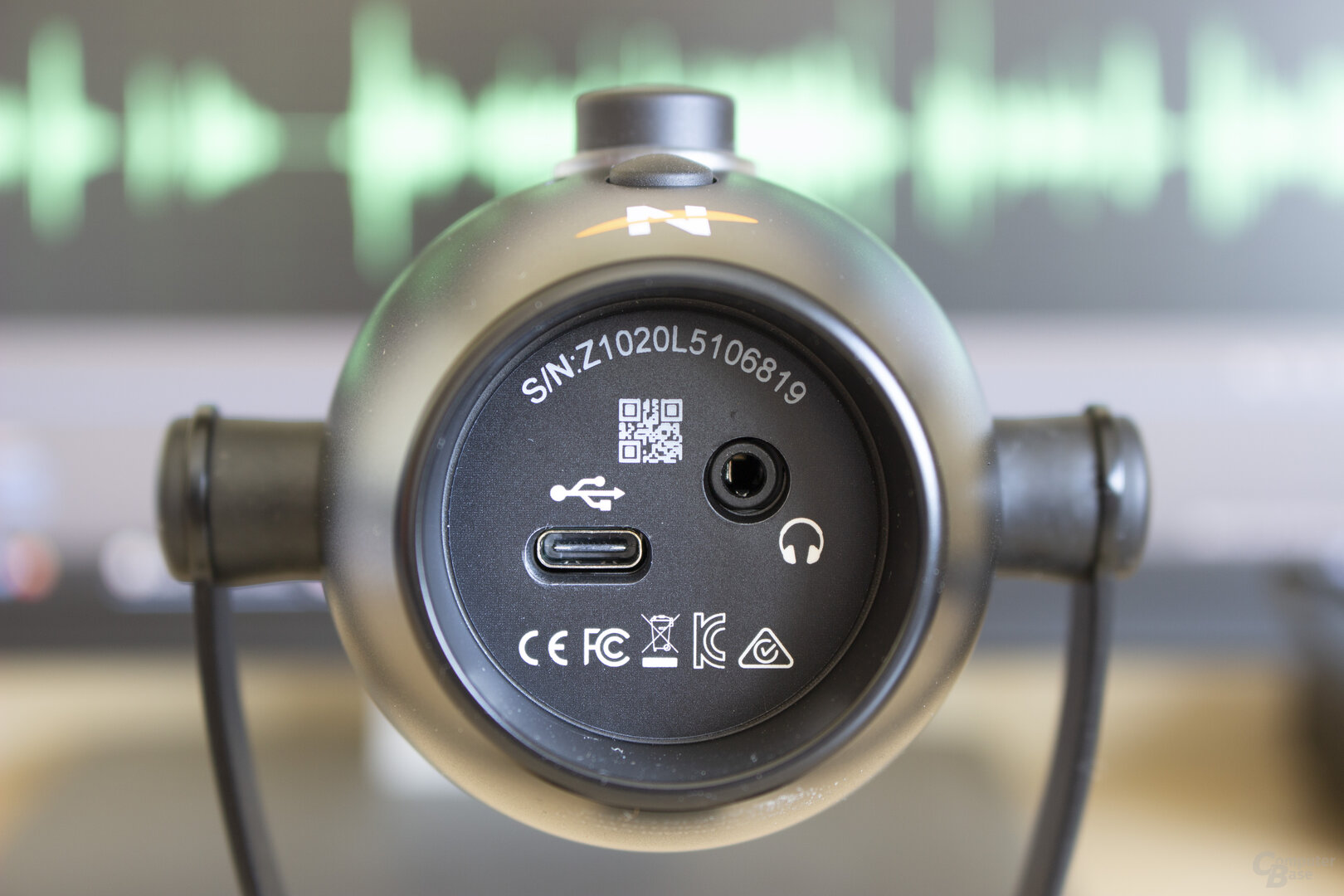 The Bumblebee II has several connections
The Bumblebee II has several connectionsOperation: Two buttons and LED ring
The operation of the Bumblebee II is quite simple, because the microphone only has two buttons. The larger one is used to adjust the volume of the microphone as well as the headphone volume and the mix balance between the microphone and the rest of the audio output. A small, discreet LED ring around the button uses the respective color to show the user which setting he is currently in. The Wave:3 from Elgato (test) was already able to convince with the concept. The mute button for muting the microphone is located under the aforementioned large controller. However, both controls do not work completely silently. In both cases, the microphone must be held in the hand for stability, which can generate audible background noise.
 Different colors indicate status and mode
Different colors indicate status and mode The Bumblebee II does not have a so-called “spider” for decoupling, which means that vibrations can be transmitted directly to the table stand, which can then cause background noise. Neat does not offer a solution for this as an accessory. Since the microphone cannot be completely removed from its holder, a universal solution cannot be used. The same applies to use on a microphone arm.
Technology: solid without popschnutz
Neat equips the Bumblebee II with a 25 mm unidirectional condenser capsule, the selected directional characteristic should also effectively filter out background noise coming from the sides. According to the manufacturer, the microphone should offer a frequency response of 20 Hz to 20 kHz, which was also confirmed by the frequency analysis in the test. Recordings are also made with a sampling rate of 96 kHz at a resolution of 24 bits, which should also serve higher demands in post-processing. However, the little brother does not have integrated protection against plosive sounds like the current flagship King Bee II. Here the user would have to find a remedy himself if necessary.
 The connections on the Bumblebee II are a bit unfortunate positioned
The connections on the Bumblebee II are a bit unfortunate positionedWhile other manufacturers equip their microphones with programs that can be used to make settings such as the volume level and that offer additional functions such as noise filters or the like, Neat also concentrates on the essentials and simply does without. If the worst comes to the worst, you have to provide the appropriate tools yourself.
Sound quality: convincingly balanced
The Bumblebee surprised us positively in the test recordings, because for the price Neat aimed for, it offers a convincing sound quality that doesn't even have to hide from its big brothers. The voice is without a doubt generally reproduced very well and to a large extent. At a short distance of around 5 cm from the microphone, even the typical strong and warm “radio voice” can be produced. Surprisingly, at this distance, the Bumblebee is almost insensitive to plosive sounds, which only occur occasionally and are then also quite subtle. However, if you want to be on the safe side, you should use additional pop protection.
 The table base of the Bumblebee II is not decoupled
The table base of the Bumblebee II is not decoupledAs expected, the image of the voice becomes thinner with increasing distance and the room acoustics have an increasing influence on the recording. But especially with a greater distance between transmitter and receiver, the Bumblebee II can also convince in terms of level, which then has to be set higher, but still offers enough reserves. In the test, the microphone cut a good figure even at a distance of 50 cm.
It has proven to be a good compromise between a comfortable position in front of the recording unit and a convincing sound tested a distance of 10 to 20 cm.
 The Bumblebee II can be easily tilted in the direction of speech
The Bumblebee II can be easily tilted in the direction of speechDue to the good characteristics and the associated solid shielding, the Bumblebee also proved to be quite insensitive to background noise. These are not filtered out artificially and can therefore be heard in the recordings, but the voice is always clearly audible above it.
Sample recordings: Neat Bumblebee II
Microphone quality recordings with and without noise(s)
Competitor example recordings
Neat King Bee II
Microphone quality recordings with and without background noise(s) < figure class="text-asset text-width"> Neat King Bee – Clean – 5 cm
Neat Worker Bee II
Microphone quality recordings with and without noise(s)
beyerdynamic M 90 Pro X
Microphone quality recordings with and without background noise(s)
beyerdynamic M 70 Pro X
Microphone quality recordings with and without background noise(s)
Dockin MP1000
Microphone quality recordings with and without noise(s)
Dockin MP2000
Microphone quality recordings with and without noise(s)
]SPC Gear SM950[/b]
Microphone quality recordings with and without noise(s)
SPC Gear SM950T
Microphone quality recordings with and without noise(s)
Roccat Torch
Microphone quality recordings with and without noise(s)
Epos B20
Microphone quality recordings with and without noise(s)
Elgato Wave:3
Microphone quality recordings with and without noise(s)
HyperX Solocast
Microphone quality recordings with and without noise(s)
Conclusion
The Bumblebee II can be seen as a solid and high-quality entry into the world of podcasts, streaming videos and the like. For 100 euros, the buyer receives an all-round good package, with which he can not only take the first steps in his new field of activity, but which will certainly serve him well beyond that.
The Bumblebee II has a lot to offer in terms of sound. Speaking from a very short distance, even the typical warm radio voice can appear, with plosives hardly playing a role. If you want to play it safe, you should provide an additional pop filter. With increasing distance, the voice becomes audibly thinner and the room acoustics have more and more influence. This is a normal effect and can only be corrected a little by setting the appropriate surroundings – this fact remains audible, after all, the microphone cannot do magic. The sound pickup is also largely unimpressed by noise. Although they can be heard in the transmission, they always linger in the background, which in turn means that the voice remains largely intelligible.
In terms of quality, there is little to complain about with the new microphone from Neat: metal is the predominant material used for the Bumblebee II, which is very stable and should therefore be well-armed for mobile use. Only the plugs for the USB and headphone connections should have been placed on the back and not on the lower end of the microphone – there is a risk of damaging the cable or the interface here. The output for headphones also ensures delay-free monitoring of the recording. Balance and volume can be adjusted between the different sources via the rotary control.
Thanks to the integrated 5/8' thread, the sound pickup can be used both on the supplied table stand and on a microphone arm – a corresponding adapter is also supplied. However, since the new Bumblebee is not decoupled, vibrations caused by the underground can cause background noise, especially when using the table stand. Care should be taken here.
At the end of the day, the Bumblebee II is an attractively priced and high-quality all-rounder that does not carry any unnecessary ballast and only focuses on the essentials – and that's exactly what it does can convince.
-
 Neat Bumblebee II review
Neat Bumblebee II review
Image 1 of 10
 Neat Bumblebee Testing II
Neat Bumblebee Testing II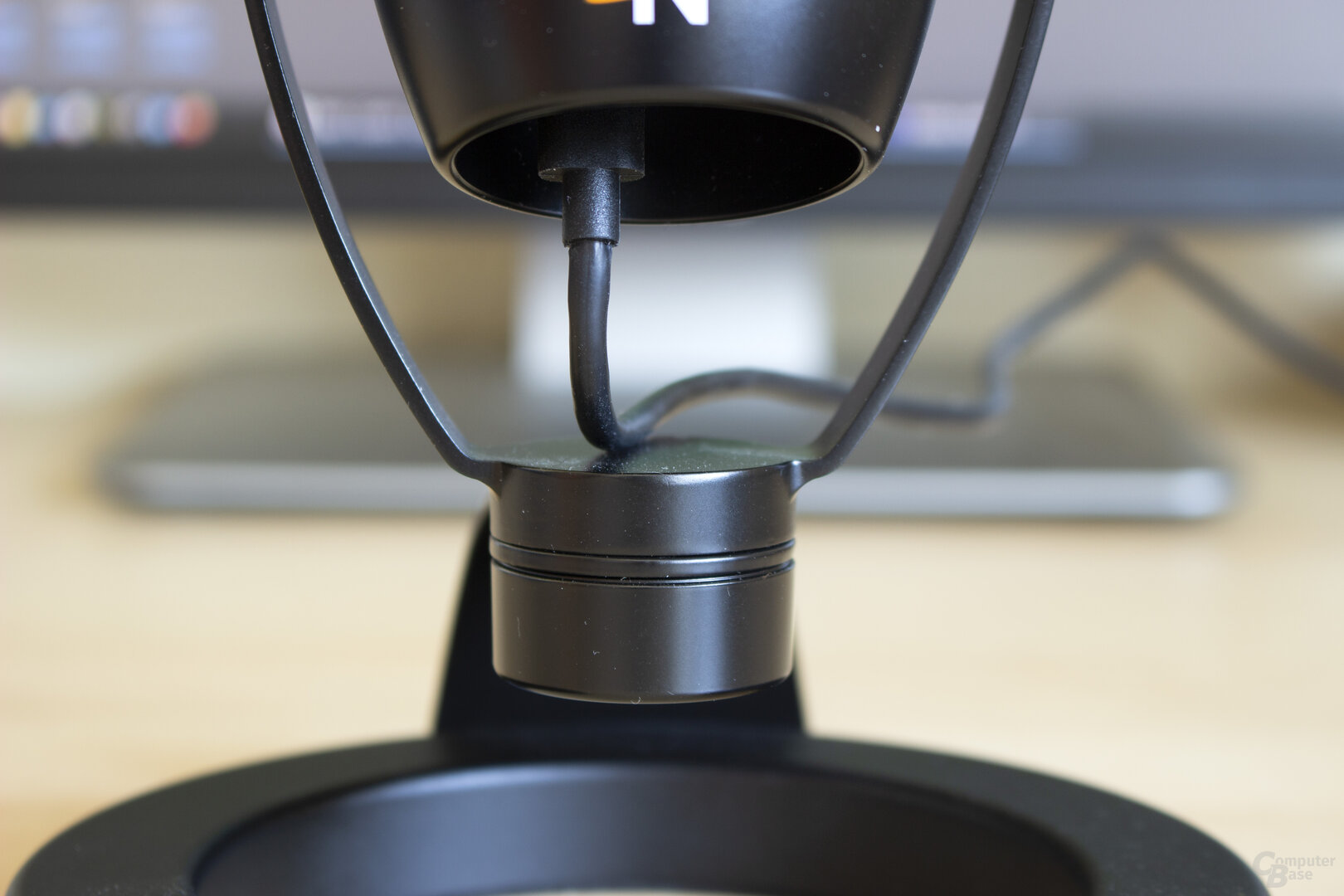 The connectors are positioned a bit unhappily on the Bumblebee II
The connectors are positioned a bit unhappily on the Bumblebee II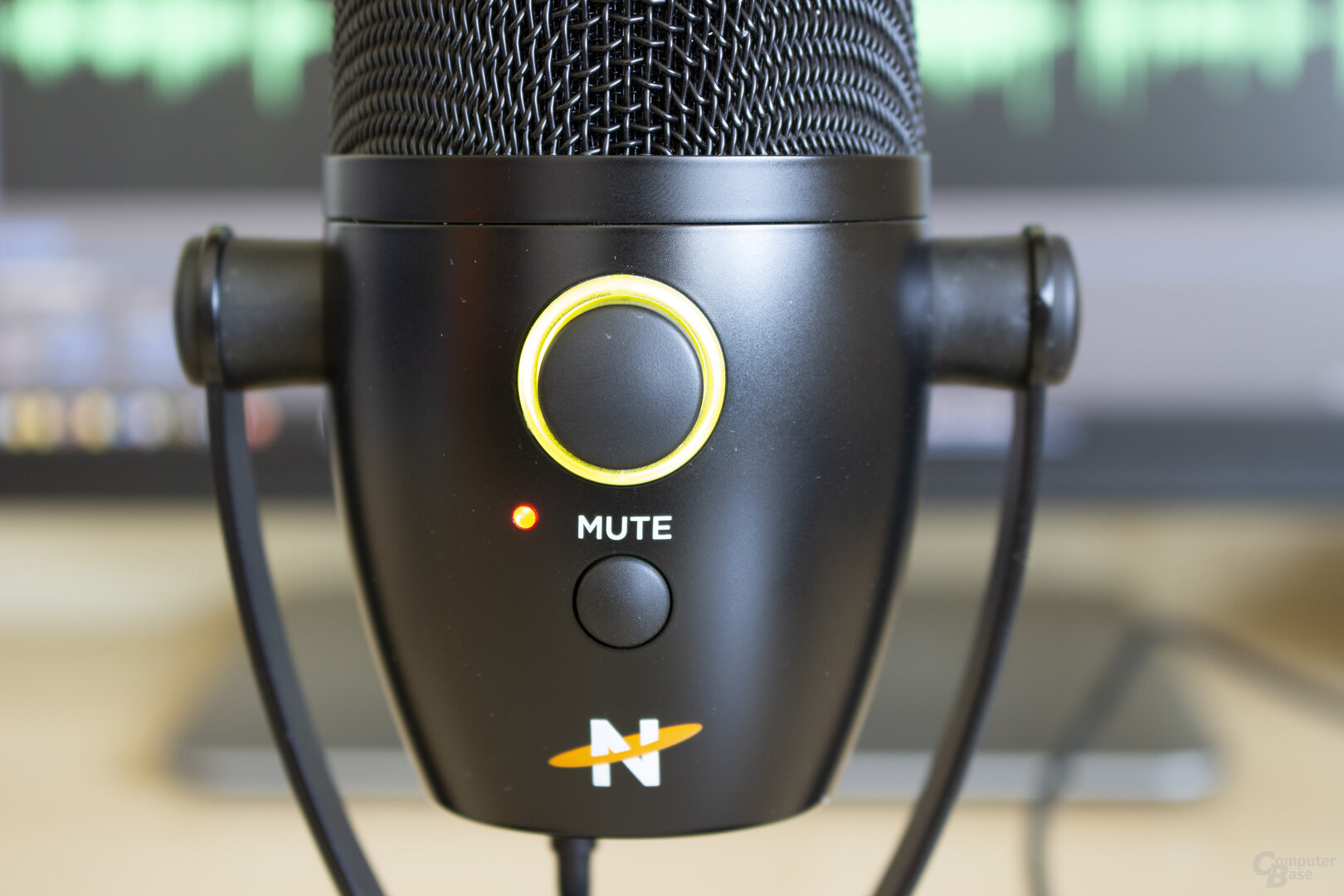 Different colors show the status and mode on
Different colors show the status and mode on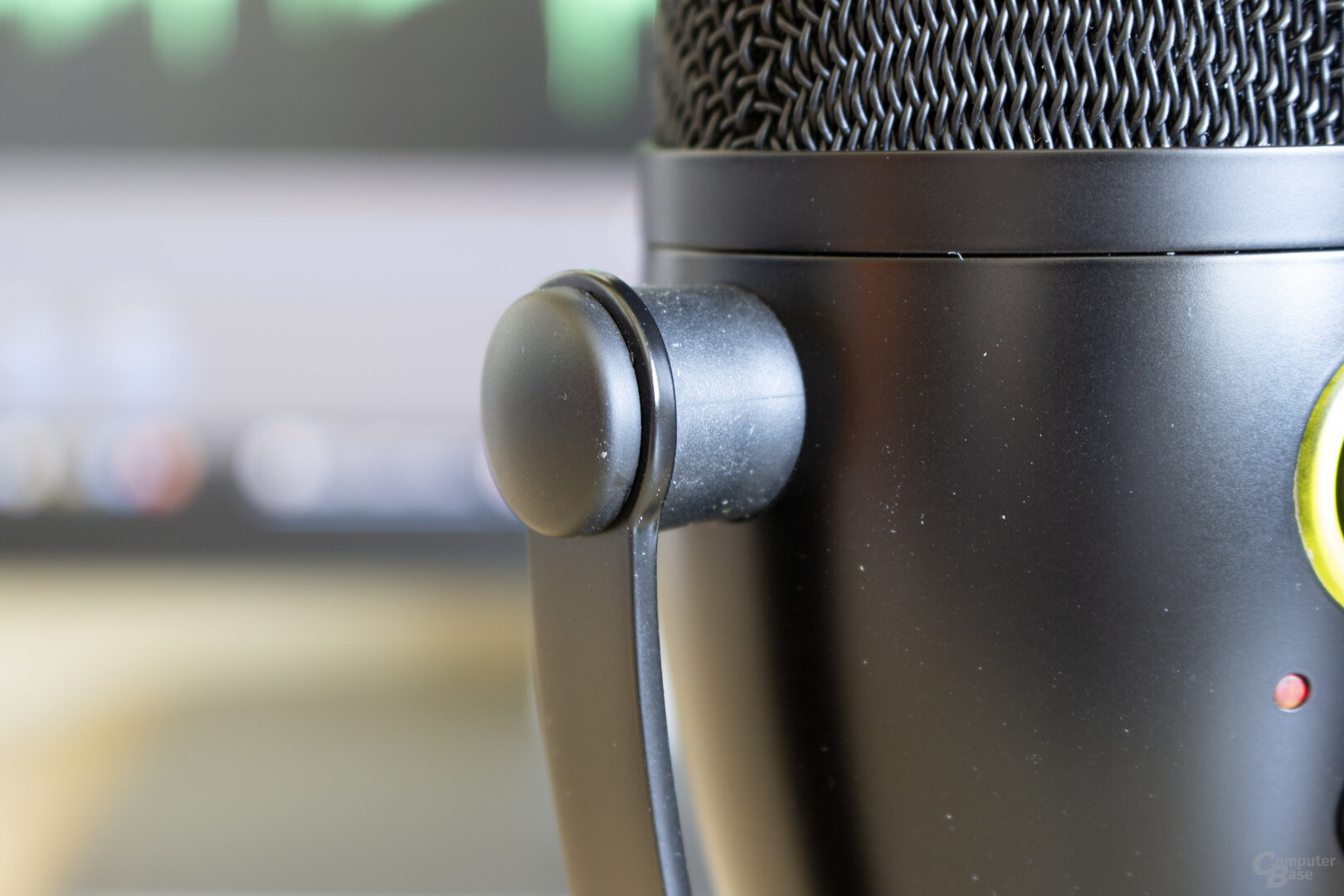 The suspension of the Bumblebee II is stable, but cannot be traced
The suspension of the Bumblebee II is stable, but cannot be traced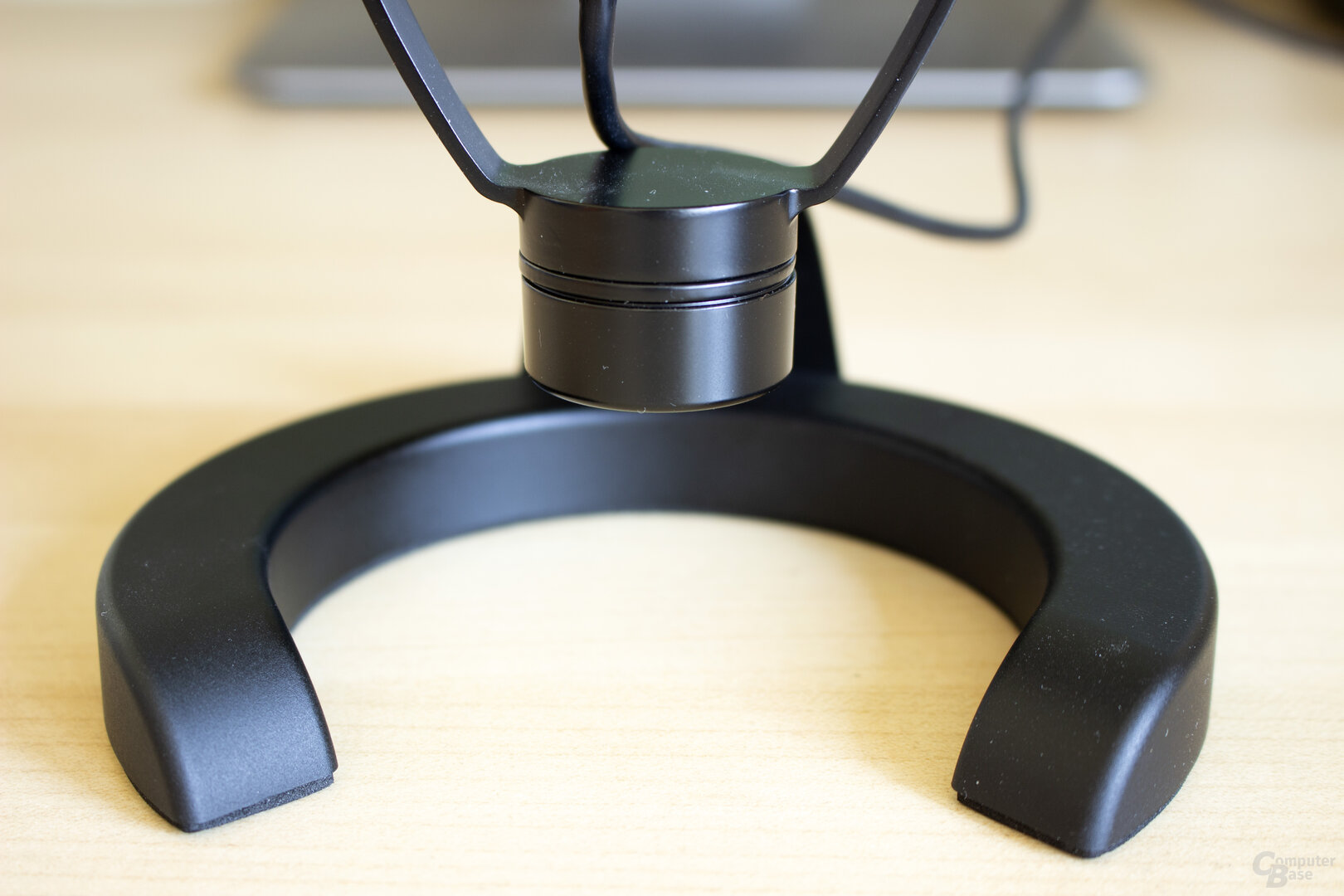 The table base of the Bumblebee II is not decoupled
The table base of the Bumblebee II is not decoupled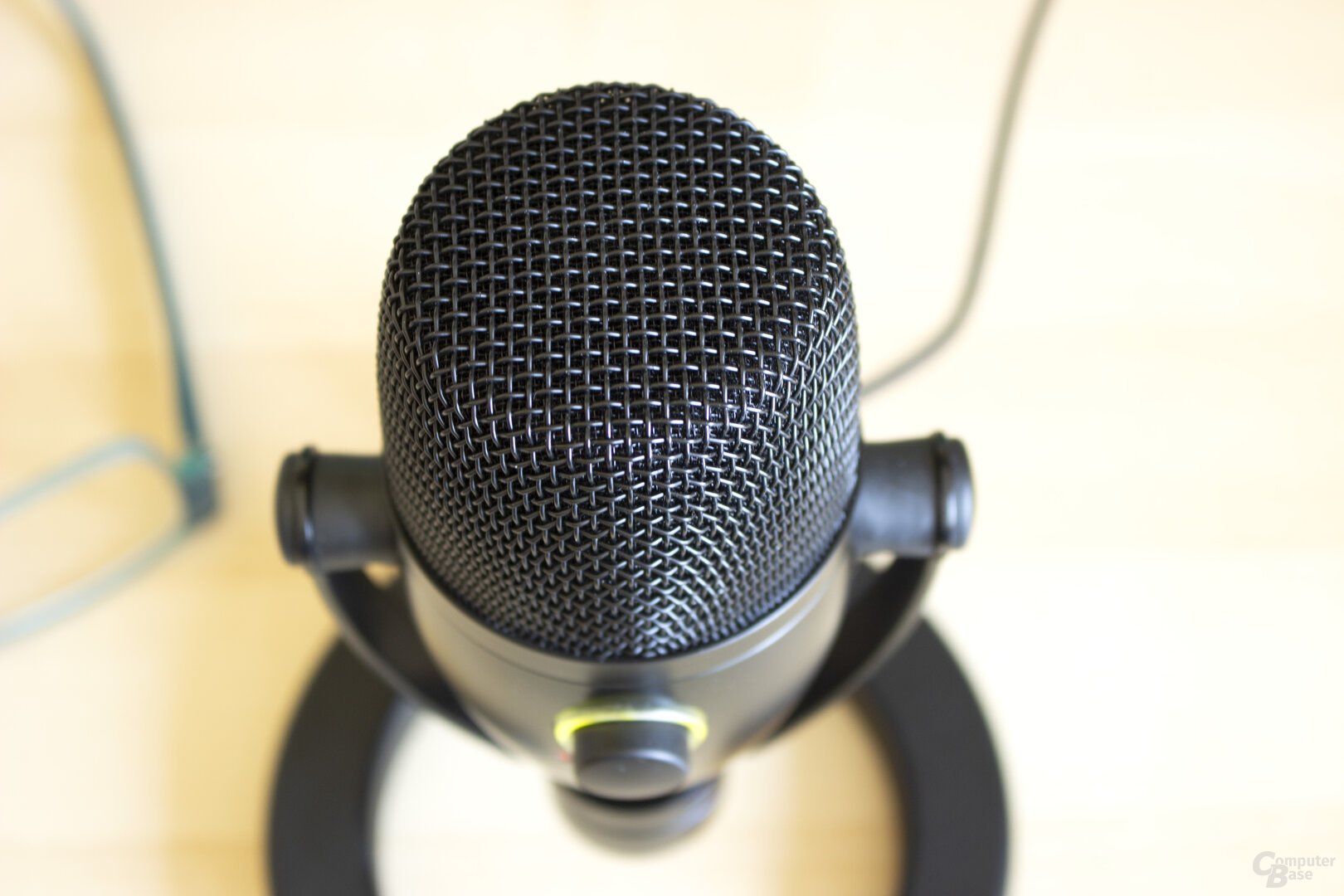 The protective grille over the microphone of the Bumblebee is made of metal
The protective grille over the microphone of the Bumblebee is made of metal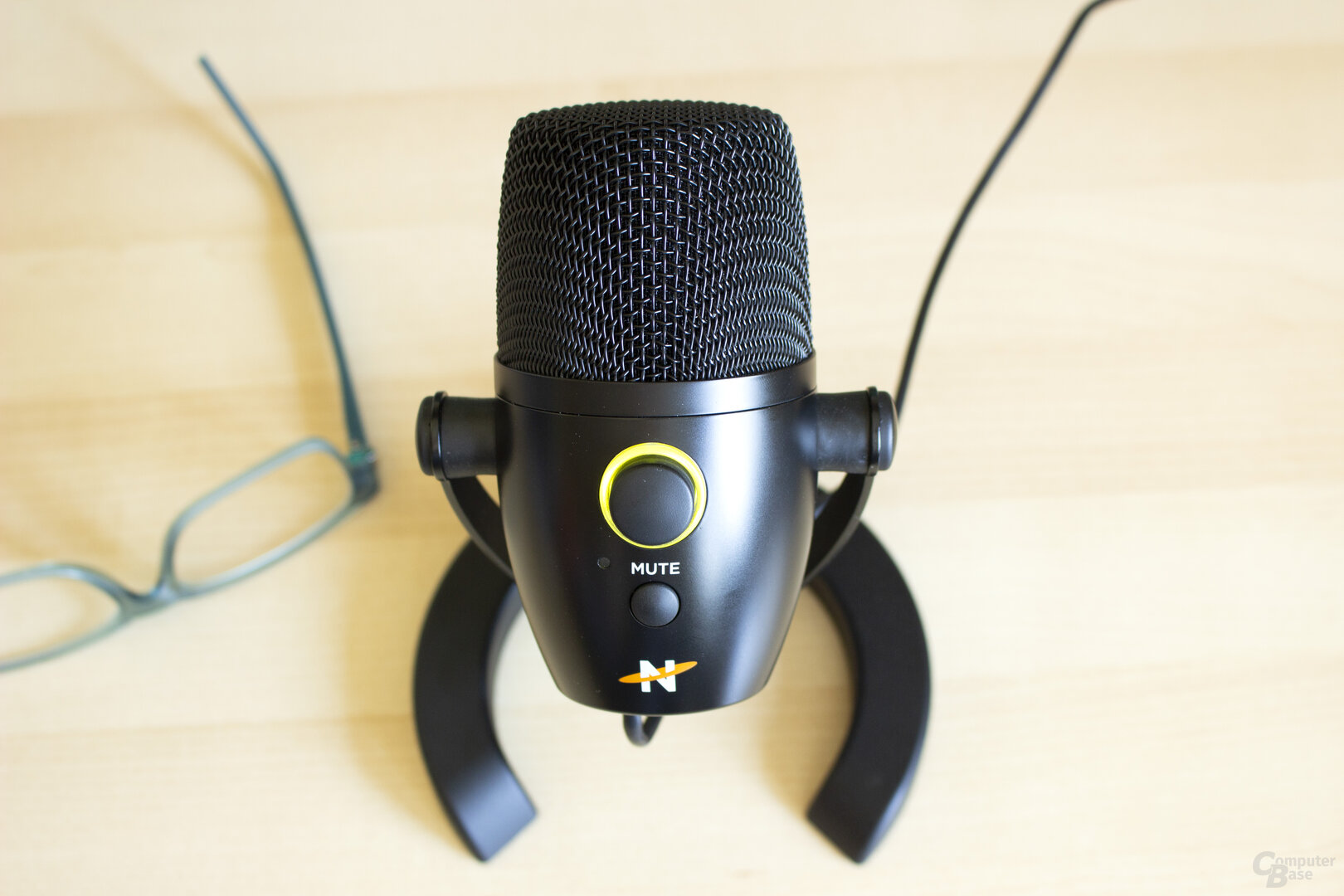 The Bumblebee II can be easily tilted in the direction of speech
The Bumblebee II can be easily tilted in the direction of speech The Bumblebee II has multiple connectors
The Bumblebee II has multiple connectors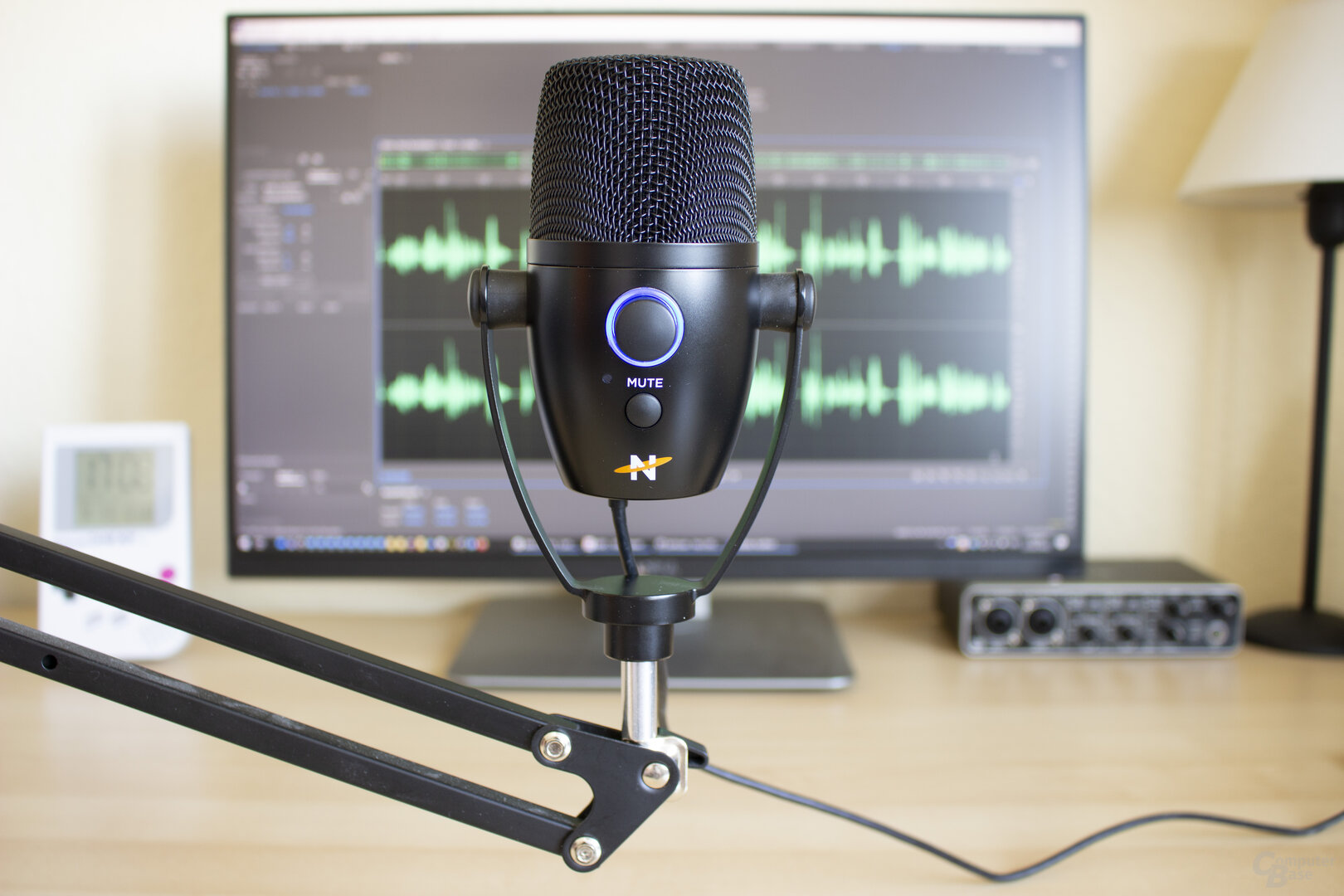 The Bumblebee II can also be used on a microphone arm
The Bumblebee II can also be used on a microphone armComputerBase was loaned the Bumblebee II by Neat for the test. The manufacturer did not influence the test report and there was no obligation to publish it. There was no NDA.
This article was interesting, helpful or both? The editors are happy about any support from ComputerBase Pro and disabled ad blockers. More about ads on ComputerBase.